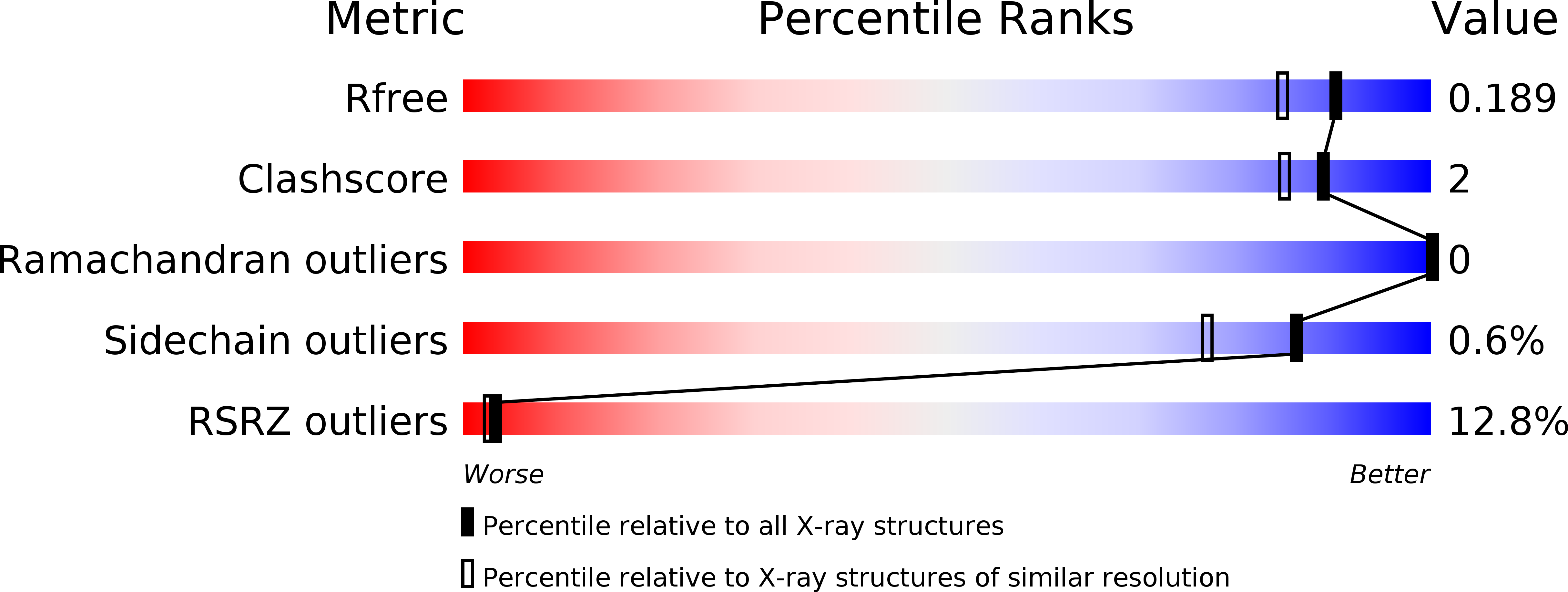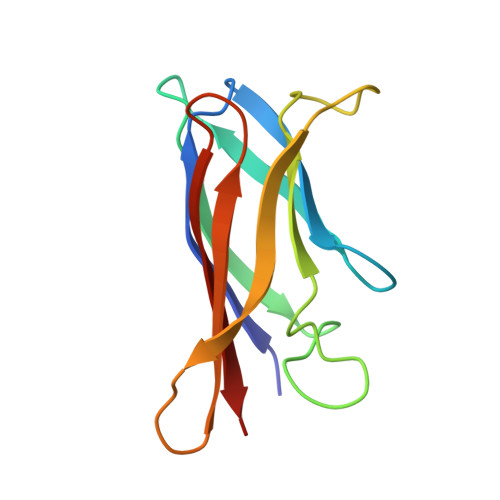Tricking a Protein To Swap Strands.
Wang, H., Lang, L., Logan, D.T., Danielsson, J., Oliveberg, M.(2016) J Am Chem Soc 138: 15571-15579
- PubMed: 27783493
- DOI: https://doi.org/10.1021/jacs.6b05151
- Primary Citation of Related Structures:
5J07, 5J0C, 5J0F, 5J0G - PubMed Abstract:
Despite continuing interest in partly unfolded proteins as precursors for aggregation and adverse gain-of-function in human disease, there is yet little known about the local transitions of native structures that possibly lead to such intermediate states. To target this problem, we present here a protein-design strategy that allows real-time detection of rupture and swapping of complete secondary-structure elements in globular proteins-molecular events that have previously been inaccessible experimental analysis. The approach is applied to the dynamic β-barrel of SOD1, associated with pathologic aggregation in the neurodegenerative disease ALS. Data show that rupture and re-insertion of individual β-strands do not take place locally but require the SOD1 barrel to unfold globally. The finding questions the very existence of partly unfolded intermediates in the SOD1 aggregation process and presents new clues to the mechanism by which hydrogen bonding maintains global structural integrity.
Organizational Affiliation:
Arrhenius Laboratories of Natural Sciences, Department of Biochemistry and Biophysics, Stockholm University , 106 91 Stockholm, Sweden.














